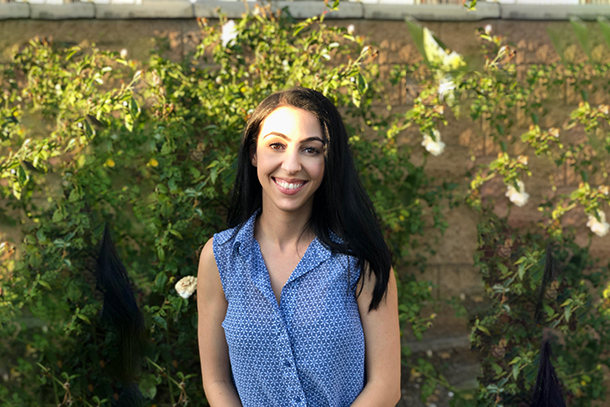For Elizabeth Haddad, a graduate of the USC Master of Science in Neuroimaging and Informatics (NIIN) program’s Class of 2019, led by the USC Mark and Mary Stevens Neuroimaging and Informatics Institute (INI), finding time to conduct compelling research was a natural and crucial part of her graduate education.
In addition to her studies in the NIIN program, Haddad analyzed the effects of aging on the brain alongside Neda Jahanshad, PhD, assistant professor of neurology at the Keck School of Medicine of USC, in the INI’s Imaging Genetics Center and undertook multiple research projects at the University of California, Irvine, where she worked in the preclinical neuroimaging lab of Andre Obenaus, PhD.
“One of my favorite things about working in a neuroimaging lab is the collaborative efforts that are undertaken, allowing for a multidisciplinary approach to study the same disease,” she said. “I love being able to learn from scientists with a wide range of expertise that each have a different approach to answering similar questions.”
As a full-time project assistant at the INI’s Imaging Genetics Center, Haddad used multiple MRI techniques, including structural, diffusion-weighted and susceptibility-weighted imaging, to study the effects of aging on the brain. Using theories and techniques gleaned from the NIIN program, she is helping to develop and distribute innovative brain imaging analysis protocols that other researchers can use to better map and understand the aging brain.
At UC Irvine, where Haddad has worked as a research assistant since obtaining her bachelor’s degree in neuroscience from UC Riverside in 2015, she tackled multiple projects, including analyzing vulnerabilities in the brain’s blood vessels following traumatic brain injury and an effort to find biological markers that predict epilepsy using MRI.
In one of her favorite projects, Haddad studied how early-life stress contributes to a person’s susceptibility to mental illness during adolescence, using brain imaging combined with cellular and molecular techniques to study individual brain cells and connections.
“Our ability to assess how the brain is rewired and how function is altered in disease has allowed the field of neuroscience to grow tremendously over the last few decades,” she said, “which is why I find this area of research so exciting.”
During her year in the NIIN master’s program, Haddad studied numerous neuroimaging methods, acquiring extensive background with the technical and computational strategies employed in biomedical research. She said the experience has fueled her career in brain imaging and inspired her to apply for relevant doctoral programs in the neurosciences.
“Elizabeth’s dedication to and enthusiasm for neuroimaging are evident in her involvement not only in our NIIN program but also in the extracurricular work she is doing at UC Irvine, at the Imaging Genetics Center and elsewhere,” said Jack Van Horn, PhD, associate professor of clinical neurology at the Keck School and director of education at the INI. “I anticipate that her focus and drive will serve her well in whatever career path she chooses.”
— Zara Greenbaum


